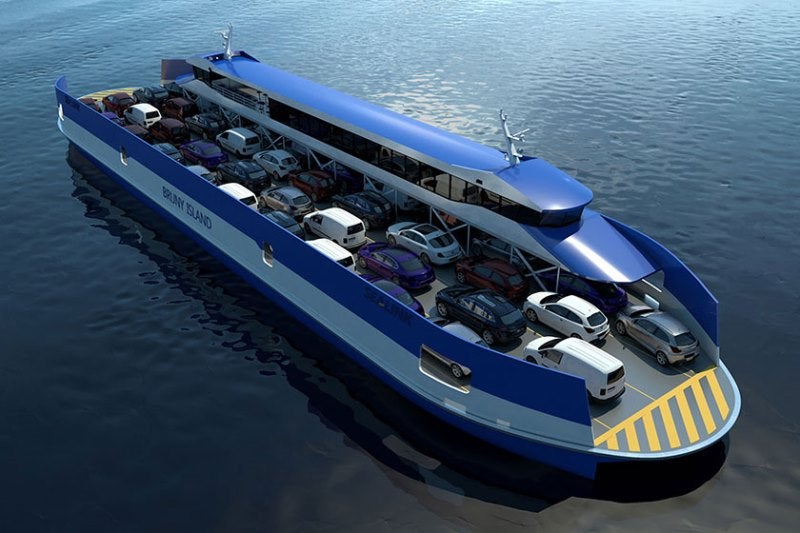
Incat Crowther has unveiled the design of a new double-ended Ro-Pax ferry that will be operated by Australia’s Sealink Travel Group.
To be built by Richardson Devine Marine in Hobart, Australia, the vessel will serve Bruny Island in the Australian state of Tasmania.
The first vessel of the series is expected to enter service in December next year.
Sealink’s new aluminium catamaran ferry has been designed to deliver significant fuel saving compared with a traditional steel monohull vessel, Incat Crowther reported.
Incat Crowther said: “The development of the vessel mirrors Incat Crowther’s holistic approach to an operation, targeting long-term value and minimising risk to the operator.
“This incudes the integration of established shore-based infrastructure, which imposes heavily on the vessel.”
How well do you really know your competitors?
Access the most comprehensive Company Profiles on the market, powered by GlobalData. Save hours of research. Gain competitive edge.

Thank you!
Your download email will arrive shortly
Not ready to buy yet? Download a free sample
We are confident about the unique quality of our Company Profiles. However, we want you to make the most beneficial decision for your business, so we offer a free sample that you can download by submitting the below form
By GlobalDataOnce built, the vessel will have provision for installation of an additional vehicle deck if it sees an increase in vehicle patronage, eliminating the need to carry extra displacement until market demand comes up.
The vessel will be developed to accommodate 36 cars and 150 passengers.
Three of its vehicle lanes will be unrestricted in height, while two central lanes will be able to carry a total 90 lane metres of trucks.
The vessel’s elevated cabin will be situated on one side and will be divided between open-sided covered space and indoor space.
Four Scania DI13 070M main engines will be used to power the vessel, which can run on two pods during off-peak periods.
The engines will be placed in each of the four corners of the vessel and will be directly linked to Schottel SRP 100 azimuthing drives, which are designed to offer improved manoeuvrability and efficiency.







